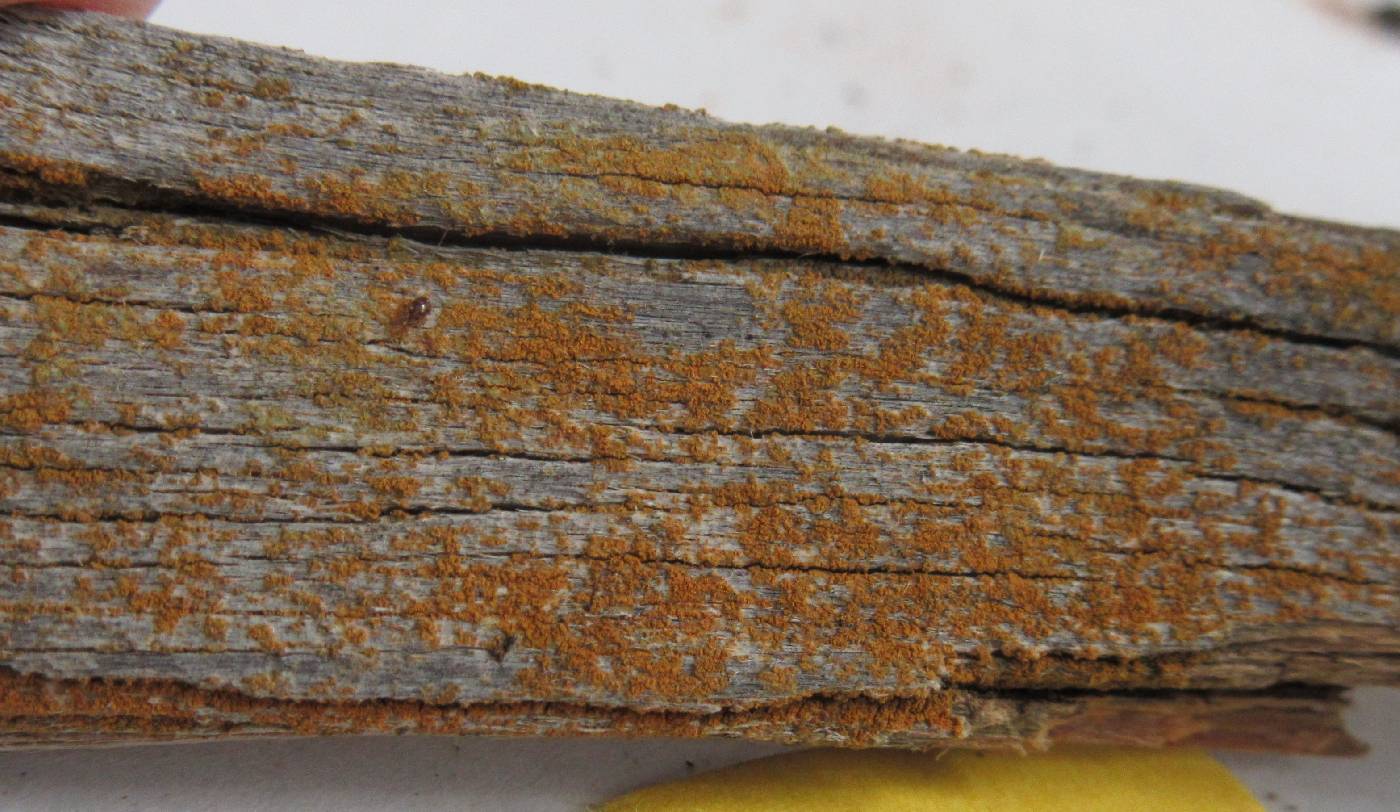
Consortium of Lichen Herbaria
- building a Global Consortium of Bryophytes and Lichens as keystones of cryptobiotic communities -
- Home
- Search
- Images
- Species Checklists
- US States: O-Z >
- US National Parks
- Central America
- South America
- US National Parks
- Southern Subpolar Region
|
|
|
|
Family: Teloschistaceae
[Blastenia citrina (Hoffm.) B. de Lesd., moreCallopisma citrinum (Hoffm.) A. Massal., Caloplaca citrina (Hoffm.) Th. Fr., Caloplaca citrina f. citrina (Hoffm.) Th. Fr., Caloplaca citrina var. citrina (Hoffm.) Th. Fr., Caloplaca citrinella (Hoffm.) Hepp, Caloplaca incrustans var. citrina (Hoffm.) B. de Lesd., Lecanora citrina (Hoffm.) Ach., Lecidea citrina (Hoffm.) D. Dietr., Lichen citrinus (Hoffm.) Ach., Parmelia citrina (Hoffm.) Ach., Parmelia citrina var. citrina (Hoffm.) Ach., Placodium citrinum (Hoffm.) Hepp, Placodium citrinum f. citrinum (Hoffm.) Th. Fr., Placodium citrinum var. citrinum (Hoffm.) Th. Fr., Placodium citrinum var. vulcanica Räsänen, Pyrenodesmia citrina (Hoffm.) Trevis., Verrucaria citrina Hoffm.] |
Nash, T.H., Ryan, B.D., Gries, C., Bungartz, F., (eds.) 2007. Lichen Flora of the Greater Sonoran Desert Region. Vol 3. Life habit: lichenized Thallus: crustose, areolate to subsquamulose, margin slightly lobed or notched, without elongated lobes; prothallus: absent surface: yellow-orange, verruculose, sorediate soredia: fine, in yellow, in irregular, laminal or marginal soralia cortex: cellular, 2030 µm thick, granules absent; medulla prosoplectenchymatous, without granules Apothecia: rare, adnate, 0.2-0.3 mm in diam., lecanorine disc: orange, flat, epruinose margin: persistent, flush; thalline margin present, concolorous with thallus; proper margin visible, concolorous with disc parathecium: consisting of radiating hyphae or cellular (paraplectenchymatous); exciple below hypothecium amorphous epihymenium: golden, K+ red, H-, 10%N-, cN-, C- hymenium: hyaline, 60-75 µm tall paraphyses: 1-2 tip cells slightly swollen, not branched; subhymenium hyaline asci: cylindrical, 8-spored ascospores: hyaline 2 locules, ellipsoid, 11-15 x 5.5-7 µm, isthmus 2.8-4.2 µm, spore end wall thin Pycnidia: present, totally immersed, ostiole orange Spot tests: apothecial margin K+ red, H-, 10% N-, cN-, C-; thallus K+ red, H-, 10%N-, cN-, C-; medulla IKI- Secondary metabolites: parietin, fallacinal, emodin, teloschistin, and parietinic acid. Substrate and ecology: on wood, bark, bryophytes, non-calcareous or calcareous rocks World distribution: worldwide Sonoran distribution: southern California, Arizona, Baja California, Baja California Sur, Sonora, and western Chihuahua. Notes: Caloplaca citrina is characterized by its orange color, completely sorediate or unlobed flat areoles with marginal soralia. Caloplaca chrysodeta is strictly on calcareous rocks in very shady and moist places and has a brownish orange color, frequently with a white cottony medulla while C. citrina is distinctly yellowish orange. Caloplaca tominii is found on soil in semi-desert areas and has larger, more convex areoles with slightly notched margins. Caloplaca flavogranulosa has a more granular thallus that sometimes becomes sorediate. Caloplaca pygmaea may appear very similar to C. citrina but is granular sorediate all over the surface of the areoles from the beginning. Caloplaca stellata is similar to C. citrina but it has distinct elongate corticate lobes with soredia originating at the tips of the lobes. Caloplaca xanthostigmoidea has coarse soredia and granules approaching isidia and occurs on rock, bark, wood and bryophytes. |
|
|
|
Powered by Symbiota






































































































